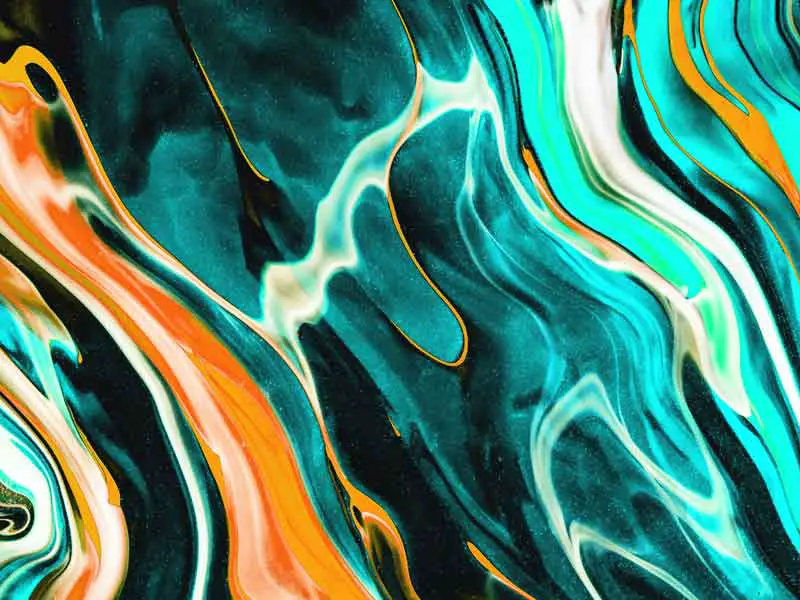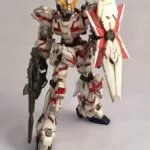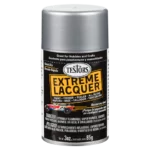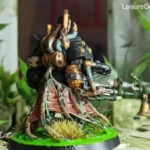Acrylic Vs. Lacquer

Acrylic and lacquer paints are two of the three common paint types used for painting scale models, miniatures, and Gundam kits. However, they are both made with acrylic polymers, which often makes new painters think the lacquers are the same paints as acrylics.
The truth is that both paints differ completely from the dry time to the effects and mixing process.
What are the differences between acrylic and lacquer paints?
Acrylic paints are water-based, but you can find some alcohol-based ones like the Tamiya acrylics. However, water-based acrylics are the most common.
Acrylic paints are thinner than lacquers, thanks to their water solvents. This feature also means you can clean them easily with water, and you won’t have to worry about breathing harmful chemicals when using the paint.
The only downside of using acrylic paints is that they chip easily.
Lacquer paints are the opposite of acrylics. They dry faster than acrylics, are difficult to use and clean, and are quite toxic. That means you’ll have to make sure your working area is well-ventilated and you use a mask when painting with lacquers.
But, unlike acrylic paints, lacquer paints are far more durable but can damage the kit’s surface if you try to remove them.
The most significant difference between these paint types is that acrylics are more plastic friendly while lacquers are more corrosive and poisonous.
Table 1: Differences Between Acrylic and Lacquer Paints
| Acrylic | Lacquer |
| Easy to use | Difficult |
| Water-based | Oil-based |
| Thin | Thick |
| Plastic friendly | More corrosive |
| Non-toxic | Toxic |
| Can clean easily with water | Requires lacquer thinner to clean |
| Dries in 20miniutes | It only takes 10 minutes to dry |
| Scratches and chips easily | Lasts longer |
What is acrylic, and how is it made?
Acrylic paint is a fast-drying water-based, often used for painting scale model kits and miniatures. It is made of three ingredients – acrylic pigments, acrylic polymer emulsion or binders, and stabilizer.
The pigment is usually ground into fine chalky powdered form. It is what gives the paint its color. The acrylic polymer, also known as the binder, holds the pigment in place when dry. Water is an essential stabilizer that ensures the pigment and binder mixes well. These three substances make up acrylic paint so that when used on miniatures or model kits, they form a clear polymer film that contains particles of colored pigment.
What is lacquer, and how is it made?
Lacquers oil-based paints are formed using acrylic resin, a synthetic polymer often clear, colorless, and extracted from trees and waxes.
When painted on plastic, metal, or wooden surface, they often form a hard and shiny coat.
Which paint for which purpose?
Both paints also function differently on different materials or surfaces.
Acrylics are best for scale model kits and miniatures, while lacquers work better on Gunpla kits.
While acrylics are known to work well on all surfaces, whether wood, metal, or plastic, they level better on models and miniatures made with plastic and wooden materials than metal Gunpla kits, thanks to their thin pigments that allow thin coats for better highlighted and detailed parts.
Lacquers’ thick pigmentation and oil-based formula make them more suited for Gunpla kits. If you use lacquer paint on plastic surfaces, lacquer paints will make it impossible to see small details on your models and minis.
What results does each type provide?
When dried, lacquer paint has a clear shiny coating offering a solid, durable finish to wood and metal kits.
On the flip side, Acrylic paints won’t give a glossy effect. Instead of a glossy finish, you get a clear and smooth water-color finish.
If an acrylic used on miniatures looks too glossy, the excessive shine makes it difficult to see what you are painting.
What thinner will go with each type
Each of these paints is highly pigmented. So, before using them in an airbrush or for hand painting, you’ll need to thin them to a slightly thick-thin concentration to make them even, flow and cover well.
But there’s a catch! All thinners won’t work the same for each painting.
For lacquer paints like the Mr. color paints, you’ll need lacquer thinners to make them even. Acrylic paints do not need any special thinner because they are water-based.
All you need is to get water to thin them to even levels.
However, alcohol-based acrylics like the Tamiya acrylics should be thinned with specialty thinners designed by the brand since they are selective with thinners.
How to clean each type
To get acrylic paint off non-porous, wood, or metal surfaces, here’s what you should do:
- Wipe the painted surface with a soft towel or paper,
- Get soapy water or window cleaner (Windex)
- Use a rag soaked in the soapy water or with the Windex and clean the paint
- Since it is water-based paint, as you clean it, it goes off with the wet rag.
Lacquer paints are more difficult to clean with water since they are oil-based.
So, instead of water used in acrylic paints, you should use high-quality lacquer thinners to perfectly get rid of lacquer paints on your kits.
Dry time for each paint
Acrylic and lacquer paints have a fast dry time, but the lacquer colors cure faster.
Hobby-grade water-based acrylics will usually dry after 20 minutes of using them on your miniature, kits, or Gunpla models and fully cure if left for 24 hours.
On the other hand, lacquer paints dry as fast as 10 minutes and cure in less than 30 minutes. But the best part of this paint is that once dry, it has an extremely hard surface. Hence, it can be challenging to get it out without damaging the surface of your kit.
Table 2: Pros and Cons Table for Acrylic and Lacquer Paints
| Pros | Cons | |
| Acrylic | Non-toxicEasy to useWater solubleDries fast (20 to 30mins)Ideal for hand brushing beginner-friendly | It does not last longChips easily |
| Lacquer | It can be sanded, polished, and buffed for superior shineAdheres better than acrylicsBetter scratch resistanceGreat for airbrushing | Fast dry time (less than 10mins) can leave lumpy pigmentsDifficult to useExtremely ToxicAre not suited for hand painting |
Conclusion
Acrylic and Lacquer paints and two good paints in their own right. But, if you’ve got a model or miniature kit, you want to stick with acrylic paints. Lacquer paints will work better for painting Gunpla kits.





